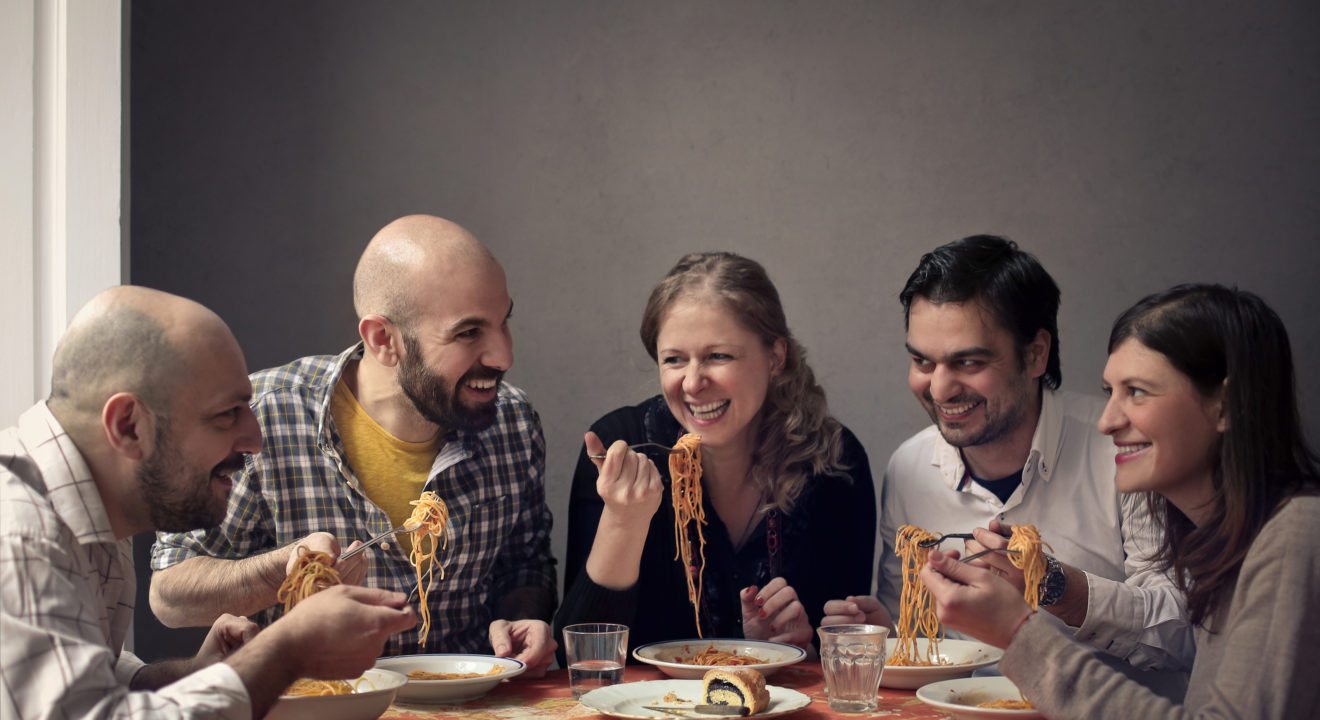Uncategorized February 13, 2017


If you’re anywhere in the U.S. and a restaurant advertises Italian food, it’s probably lying to you. Most “Italian” places here in the U.S. that serve Italian American food have you thinking you’re eating the real deal. Hah!
A staple in American-Italian dishes is excessive garlic. Italians do use garlic, just not cloves and cloves of it on each dish. It’s no wonder we’ve all got such bad breath! The same goes for onions too. We like to dice them and put them in everything. And you might as well kiss your garlic bread goodbye, because butter on toast (and you need more garlic—seriously?) is very uncommon in Italy. It’s rare for Italians to eat bread with olive oil before meals as well. Bread is for the remaining sauce on your dinner plate, not as an appetizer before the antipasto!
Fettuccine Alfredo is also an American-born dish. Its roots go back to Rome in the early 1900s, but back then it was merely pasta with butter and parmesan. The simple dish was created by Alfredo de Lelio for his pregnant wife suffering from morning-sickness, and its recipe was brought back to the U.S. where it evolved into the gooey cheesiness it is today.
And spaghetti and meatballs? American! Italians eat their pasta first (primo), and then their meats next (secondi), not together. (Except for a certain area in southern Italy where you can find very small meatballs in your pasta). An article in New York Magazine claims that the trend of putting meatballs on the spaghetti started when Italians immigrated to the U.S. before World War I. Because of the exchange rate, they immigrated with more money, and made more money than they did back in Italy, so they were able to afford nicer foods—and this meant meat. Putting meatballs on top of spaghetti showed that they were flourishing financially, and that they didn’t need to prepare each course separately.
Additionally, chicken would never go on pastas in Italy. Fish is much more common, especially in places like Sicily where it comes from right off the docks. Something else you don’t see in Italy is chicken parmesan. You will see a similar dish in some regions of Italy, but it has eggplant instead of chicken.
This final American-Italian faux pas is one that most Americans are surely unaware of. Cappuccinos are to be had solely in the morning, with only something like a croissant. They don’t accompany meals, they are to be enjoyed in their own time. Some cafes and bars in Italy even turn away tourists who ask for a cappuccino at any other time than in the morning, according to The Guardian.
A major fault of Italian restaurants in the U.S. is that they combine dishes and foods from all of the regions of Italy. A restaurant in Florence could have completely a different menu from a comparable restaurant in Naples, because they cater to the traditions and foods of the region. In the U.S., you can find all of the varieties of foods and dishes in a single restaurant, but at least now you know that they’re probably prepared wrong.
Sorry, no related posts found.